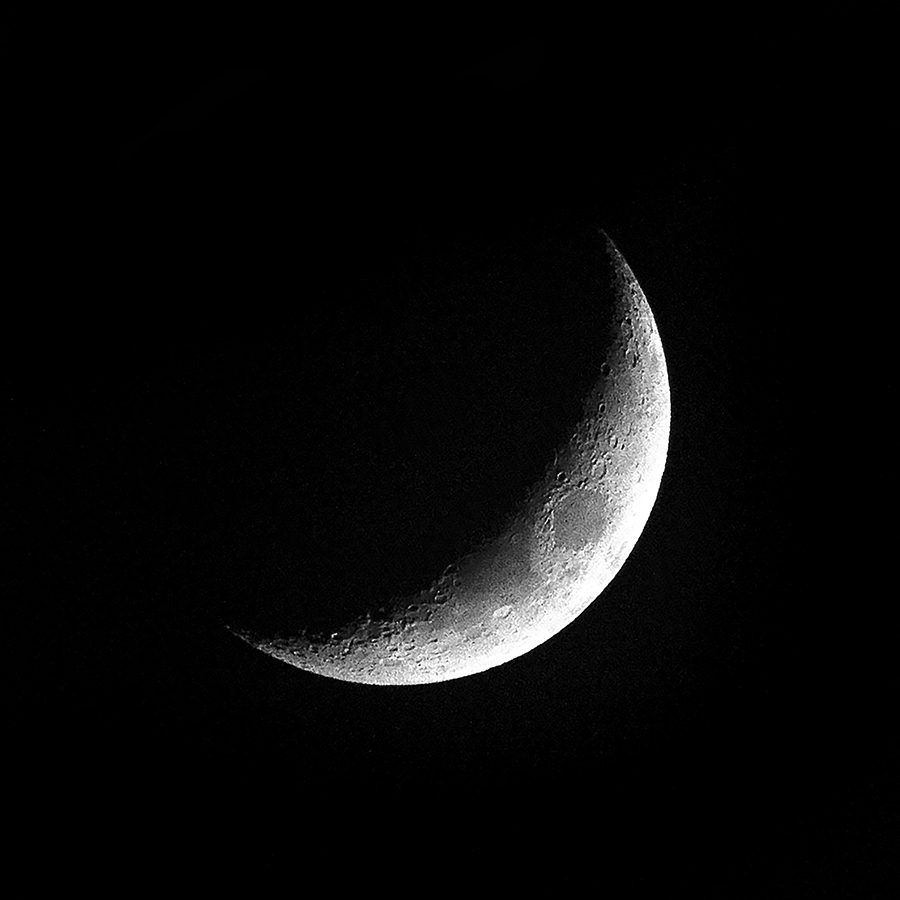Among the great wonders of the world are: sunsets, solar eclipses, and new babies’ smiles! To which I would add the cool, silver, crescent, moon. Last Friday the moon was especially glorious and I decided for a lark to take a photograph with my big birding lens. The result is Figure 1.
Technically I tried spot metering on the crescent but that was way too bright. So I shifted to M or manual mode. “Oh no! Terror,” you say. But it’s actually kind of easy. Remember the Ansel Adams rule 1/(the ISO) at f/16. That’s a good place to start. But didn’t quite work out. That lens is happiest (sharpest) at f/7.1; so you might have expected a three stop faster exposure of 1/4800th of a second. In fact, the best, not saturated, image was at 1/800 th sec at f/7.1. Rules were made to be broken, and I am pretty happy with the results, even with the sharpness compromised by a slight haze and the performance of the lens fully extended.
So I am calling this photograph Selene. Selene is the Greek goddess of the moon. “No,” you say “that should be Artemis.” While they are both moon goddesses, Selene is the personification of the moon itself. “No,” you say, “that should be Luna. Same thing, Luna is the Roman name for Selene, which is the Greek name.
I am partial to “Selene,” because the name reminds me of the word serene, and truly, there is nothing more serene than seeing a crescent Selene hang in an inky winter’s sky just after sunset. I remember looking at the crescent moon as a youth, in my Junior Astronomy days, and the glory and beauty have never left me. You begin to understand the human need to personify everything that is beautiful in nature.
Canon T2i with EF 100-40 mm f/4-5.6L IS USM lens at 400 mm ISO 1600 Manual M Mode 1/800 th sec at f/7.1.

